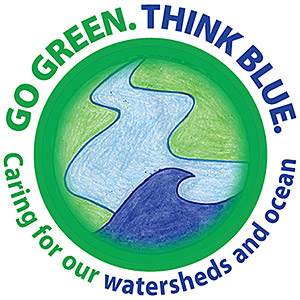Students lead the zero waste movement by combating marine debris
By Alyssa Nally
September 2017
What will the overall health of the ocean look like in the future? In response to the overwhelming presence of plastic pollutants in marine ecosystems, students are taking matters into their own hands by raising awareness about this global environmental issue.
From March 20th to April 21st, students from K-12 schools across the nation took part in the fifth annual Students for Zero Waste Week campaign. Ninety-seven schools from 14 different states and territories formally pledged to take the Zero Waste Week Challenge. In doing so, these schools chose one of the five campaign weeks to raise awareness on campus, at home, and in their communities about the negative impacts of single-use plastics and other land-based waste on the overall health of local watersheds, national marine sanctuaries, and the ocean. The campaign's underlying land-ocean connection provides the platform – and motto – for Students for Zero Waste Week: Go Green. Think Blue!

The idea of Students for Zero Waste Week was sparked in 2013 by eight Ocean Guardian Schools. Located near the Carmel River Watershed, these schools saw a need to reduce the amount of waste entering their local watershed through campus-based initiatives. With coordinating support from NOAA's Ocean Guardian School program, this campaign's scope and size has substantially grown, while continuing to be student-led and community-focused.
During Zero Waste Week, schools develop activities that empower students to be the change makers in their community. As one of their initiatives, students often opt to reduce waste on campus by implementing the use of sustainable alternatives to single-use plastic items such as bags, bottles, spork packs, and plastic foam trays. For example, students at Oscoda Area High School in Oscoda, Michigan, chose to increase their use of the reusable water bottle filling station on campus. Participants at this school collaborated with their custodial and cafeteria staff to continue these practices for the remainder of the school year.

In addition to reducing single-use plastics, schools celebrated Zero Waste Week by hosting assemblies, student expositions, and environmental fairs. To extend their reach outside of school campus boundaries, students distributed sustainable bags at local grocery stores, met with state legislators, presented to their school board, and educated community members about how waste enters the ocean.
Single-use plastic is not the only type of waste students aim to reduce throughout the week. Schools also set out to reduce their dependence on paper products, power down electronics when they're not in use, streamline recycling efforts across campus, and establish composting programs in collaboration with their cafeteria. During Zero Waste Week, students at Port Townsend High School in Port Townsend, Washington, prevented 600 pounds of food waste from entering the landfill while developing a composting system for their school-based community garden. "Through the efforts of the Students for Sustainability, our cafeteria shifted from paper plates and plastic utensils to ceramic plates and real flatware that were collected in a community plate drive," explains Lois Sherwood, a teacher at Port Townsend High.

Several schools participated in classroom and campus-wide waste audits to evaluate their waste streams during Zero Waste Week. By tallying the number of single-use items in their waste bins before the start and at the end of the week, percent changes during the campaign were calculated for each school. These numbers display the hard work each student put towards embracing zero waste.

Artistic expression and creativity is heavily employed throughout Zero Waste Week. Participating students collaborated to create unique signage, record public service announcements, construct bottle cap murals, decorate reusable bags, compose environmental stories, and produce informative videos to share the message of Students for Zero Waste Week.

Most importantly, Zero Waste Week motivated students to come together to determine how to incorporate zero waste practices beyond the week-long campaign. By turning Zero Waste Week into a zero waste way, students were able to continue the discussion around how to further their zero waste efforts through implementing changes on campus, at home and within their community.

Interested in going green and thinking blue by participating in next year's Students for Zero Waste Week campaign? Check out the Students for Zero Waste Week webpage.
Students for Zero Waste Week is sponsored by NOAA's Office of National Marine Sanctuaries and the Ocean Guardian School Program.
Alyssa Nally is the program coordinator for the Ocean Guardian School Program.

